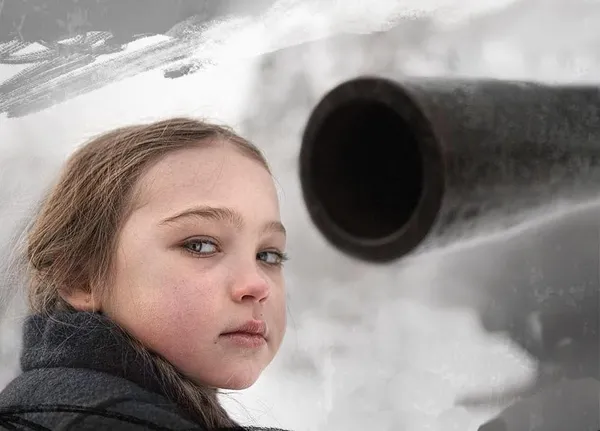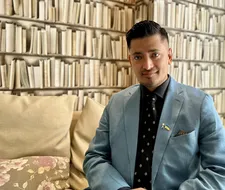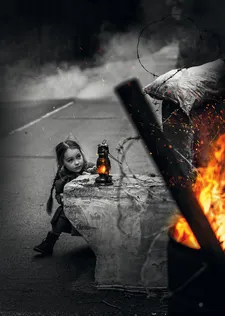 |
| One of the Ukrainian children featured in Can I Go Home Now? Photo: Cinessaince Motion Pictures |
After more than a month filming in the Ukraine war zone filmmaker and self-declared humanitarian Pritan Ambroase was plunged almost blinking in disbelief into the glamour and razzamatazz of Cannes Film Festival.
The trip was to talk up his documentary Can I Go Home Now? which looks at the hostilities through eyes of some of the children left behind. Ambroase describes it as “a lesson in courage about the impact of conflict on innocent people and a testament to human resilience.”
 |
| Pritan Ambroase director of the film Can I Go Home Now?, about Ukraine’s forgotten children Photo: Richard Mowe |
“I had asked my father for money - he is a businessman but is a sceptical of the arts. The National Lottery confirmed they would fund the film and my father could not belief I had persuaded them to give me support. At the same time I also started my humanitarian activities. So all my life I have been trying to do both. Now years later I’m combining all my passions in to one film.
“I have been trying to help Ukraine since the first day of the war. I am disappointed by the media reactions to the conflict and their portrayal of it which tends to focus on one disaster or another. I think we have become desensitised to what is going - and with my film I try to address that. My film is from the heart. I want to use the power of cinema to tell the whole world what is going in Ukraine - through the eyes of these remarkable children. I want people to watch the film and then take action.”
Despite refusals by the British Embassy, his security advisers and his insurance company to allow him to go Ambroase, who grew up in Kent, persisted. He hired a Ukrainian crew most of whom did not speak English, and he filmed all over the country. “Every day we had to change schedules depending on what was happening and where or if there had been an attack. A collaborator of mine found all the children, representing different areas of the country. They had to be children who wanted to speak to camera - and we had a psychologist on set to make sure they were fine with the experience.
Among them was a young gymnast whose leg was obliterated by a missile but who continues her craft with a prosthetic limb; a teenager shopping with his father who saw him being shot in front of him and an 11-year-old girl who tells of the terrors of seeing her older friends disappearing and then being raped by Russian soldiers.
The film is now in post-production in Poland (in case of requirements for additional shooting). He was amazed at the resilience of his subjects. He added: “We had missiles flying overhead but even if we had to take cover, we were able to come out once the danger had passed and before the next sortie. They were adept at just going about their lives. I haven’t had any adverse news of anything that has happened to the children since the filming. They told me that they found that a lot of the people who came purporting to want to help them but were really looking for marketing possibilities and opportunities for product placement.”
He commended the likes of Orlando Bloom, Sean Penn and even Boris Johnson and other celebrities for the way their personal appearances on the front line have helped to maintain the spotlight on the conflict.
Can I Go Home Now? is Ambroase’s first feature length film. It was shot by cinematographer Tymofiy Avramchuk. Oscar-wining composer A R Rahman, will write the score. He hopes the production will be finalised for screenings in the autumn.
For more about the film visit the official site.






















